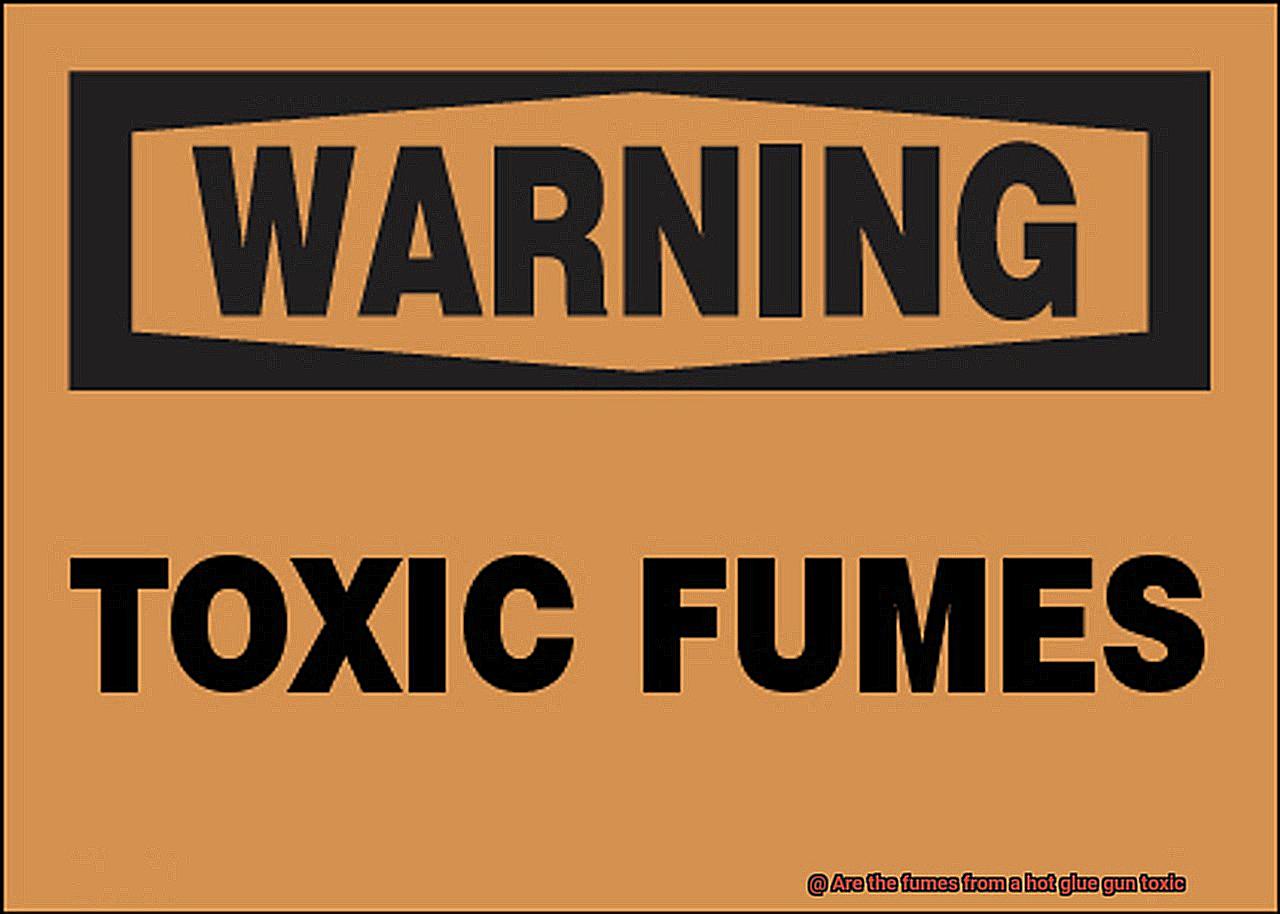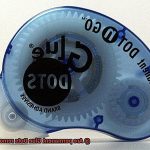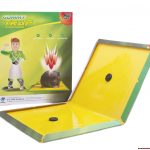Ever caught a whiff of that unmistakable, sharp scent wafting from your trusty hot glue gun and wondered if it’s doing more harm than good? As crafters and DIY aficionados, we dive headfirst into our projects, wielding our glue guns like creative warriors. But amidst the flurry of crafting fervor, it’s crucial to address the burning question: Are those fumes toxic?
In this blog post, we’re going to dig deep into the world of hot glue gun fumes. We’ll separate fact from fiction and shed light on the potential health risks lurking behind those mysterious wisps. So grab a steaming cup of joe, find a cozy nook, and join us as we unravel the secrets surrounding this enigmatic crafting companion.
From dissecting the chemical makeup of hot glue gun fumes to understanding their impact on human health, we’ll arm you with all the knowledge you need to make informed decisions about protecting yourself in your workshop. It’s time to banish uncertainty and embark on this enlightening journey together, ensuring that our creative passions are matched by a safe and healthy crafting environment.
What are Hot Glue Guns?
Contents
- 1 What are Hot Glue Guns?
- 2 What Chemicals Are in the Fumes?
- 3 Potential Health Risks from Fumes
- 4 Proper Ventilation and Protective Equipment
- 5 Long-Term Exposure to Fumes
- 6 Health Problems for Individuals with Respiratory Conditions or Sensitivities
- 7 Safety Guidelines from Manufacturer
- 8 Symptoms of Fume Inhalation
- 9 Conclusion
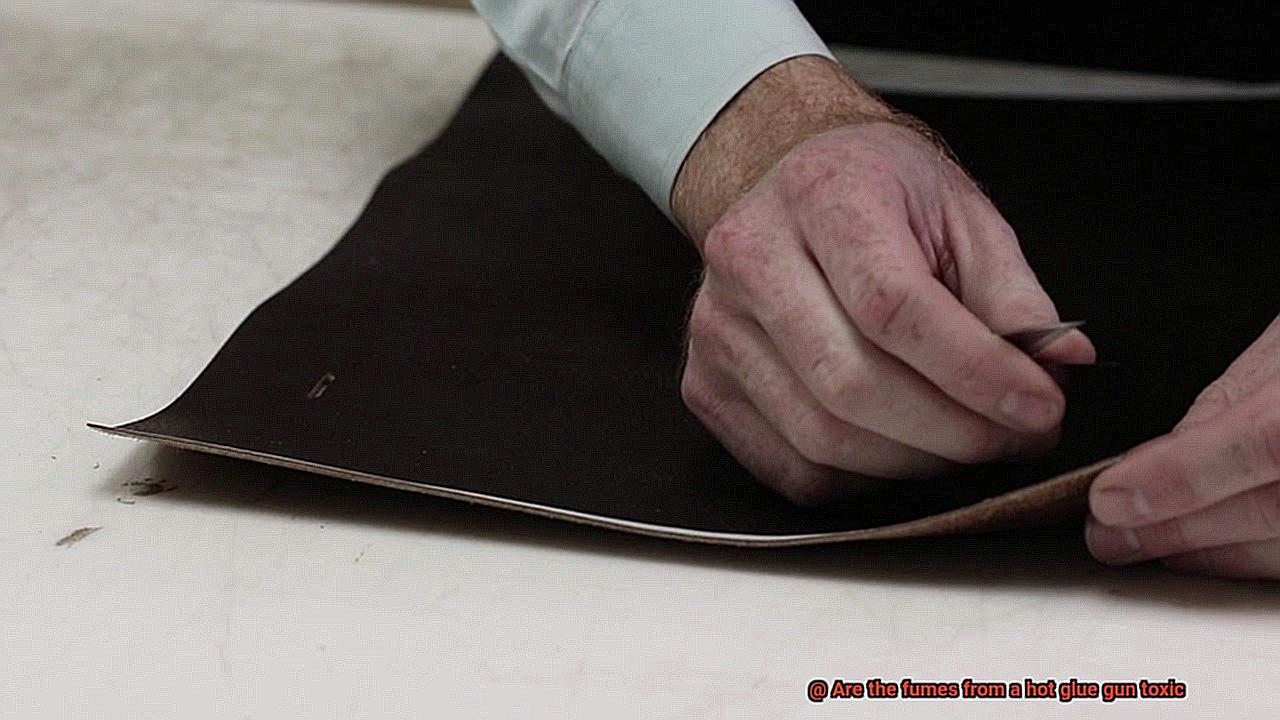
Step into the world of arts and crafts and discover the game-changing tool that has revolutionized the industry: the hot glue gun. With its ability to bond materials quickly and securely, this handheld device has become a must-have for crafters, DIY enthusiasts, and professionals alike. In this comprehensive guide, we will delve into what hot glue guns are, how they are used, the benefits they offer, and important safety precautions to keep in mind.
What are Hot Glue Guns?
Hot glue guns are powerful handheld devices that dispense hot adhesive through a heated nozzle. Powered by electricity, these guns use glue sticks that melt when heated, allowing for easy application on various surfaces. The glue solidifies rapidly as it cools down, creating a strong bond between materials and opening up a world of creative possibilities.
How are Hot Glue Guns Used?
The versatility of hot glue guns knows no bounds. From attaching decorations to repairing small objects or even creating intricate sculptures, these tools excel in tasks requiring quick adhesion. They can be used on a variety of materials like fabric, wood, metal, plastic, and more. Whether you’re working on a school project or designing a masterpiece, a hot glue gun is your trusty companion.
Benefits of Using Hot Glue Guns:
- Quick and Strong Adhesion: With its rapid bonding properties, hot glue is ideal for time-sensitive projects where you need a reliable bond in an instant.
- Versatility: Hot glue is a master of all trades, capable of bonding diverse materials together effortlessly. This makes it suitable for a wide range of crafting projects.
- Ease of Use: Hot glue guns are user-friendly tools that require minimal setup and offer precise control over adhesive application. Simply load the glue stick, let it heat up, and let your creativity flow.
- Affordable and Accessible: Hot glue guns are widely available at affordable prices, making them accessible to crafters of all levels. They are an economical investment that can elevate your crafting game.
- Temporary Bonding: Unlike permanent adhesives, hot glue offers the advantage of temporary bonding. This means you can reposition or remove glued objects easily, giving you flexibility in your creative process.
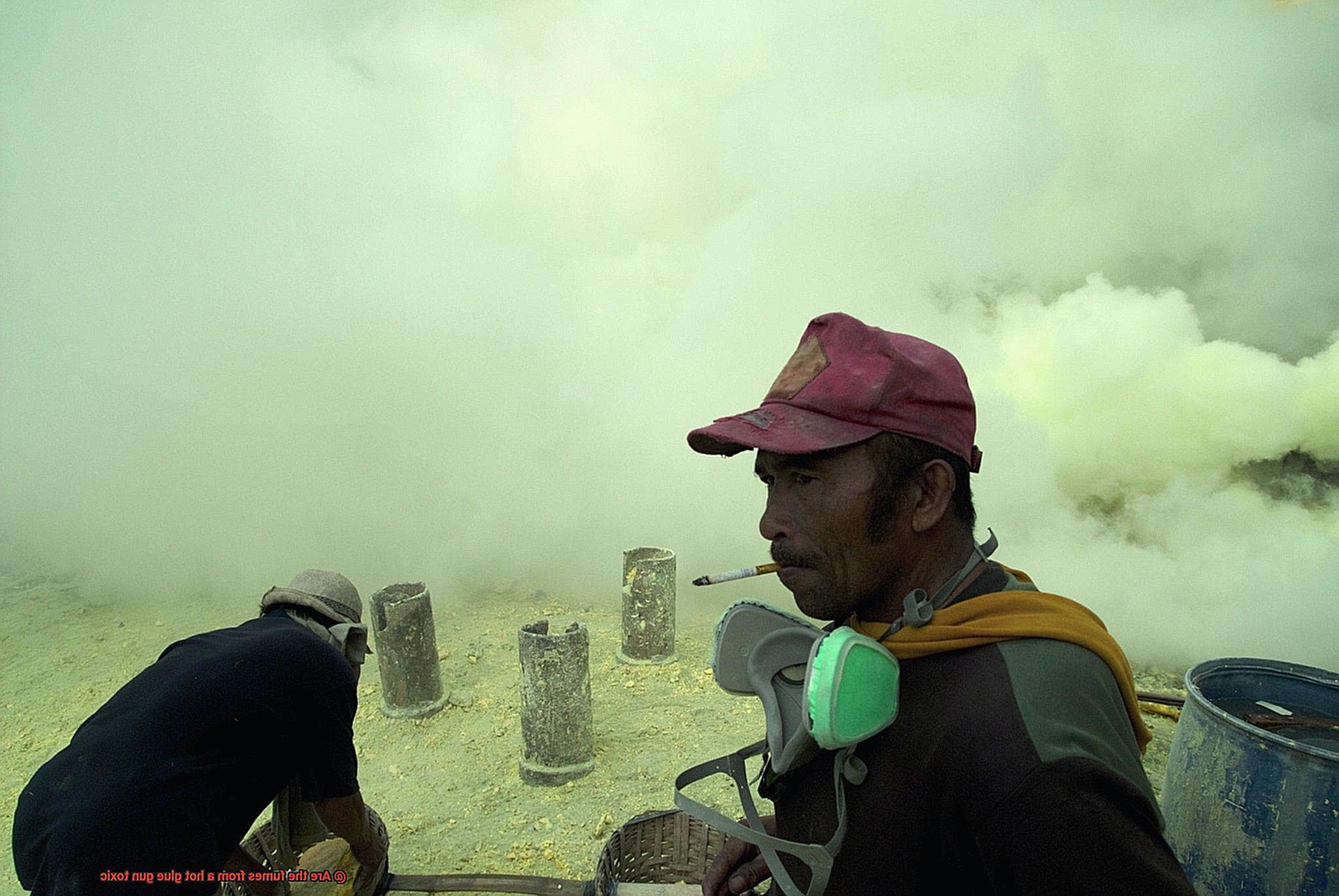
Safety Precautions:
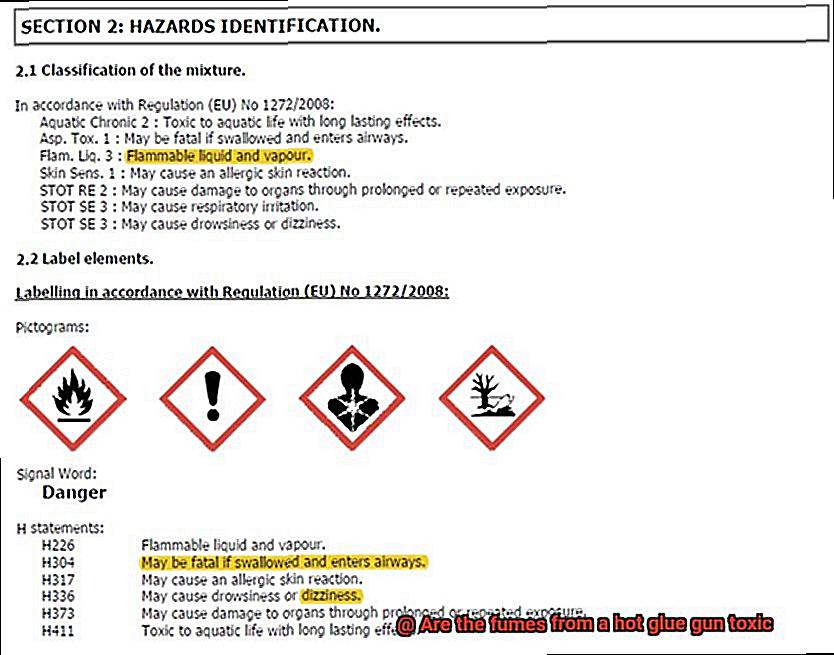
While hot glue guns are generally safe to use, it’s crucial to prioritize safety to prevent accidents or injuries. Always handle the gun with care and avoid direct contact with the heated nozzle. Wearing protective gloves and utilizing tools like tweezers can provide an extra layer of safety. Additionally, use hot glue guns in well-ventilated areas to minimize exposure to potentially harmful fumes.
What Chemicals Are in the Fumes?
As you squeeze that trigger, melting the adhesive and unleashing a wave of creativity, have you ever pondered about the chemicals hiding in those fumes? Fear not. We’ve explored the depths of this hot topic to shed light on what truly lies within.
Ethylene-Vinyl Acetate (EVA):
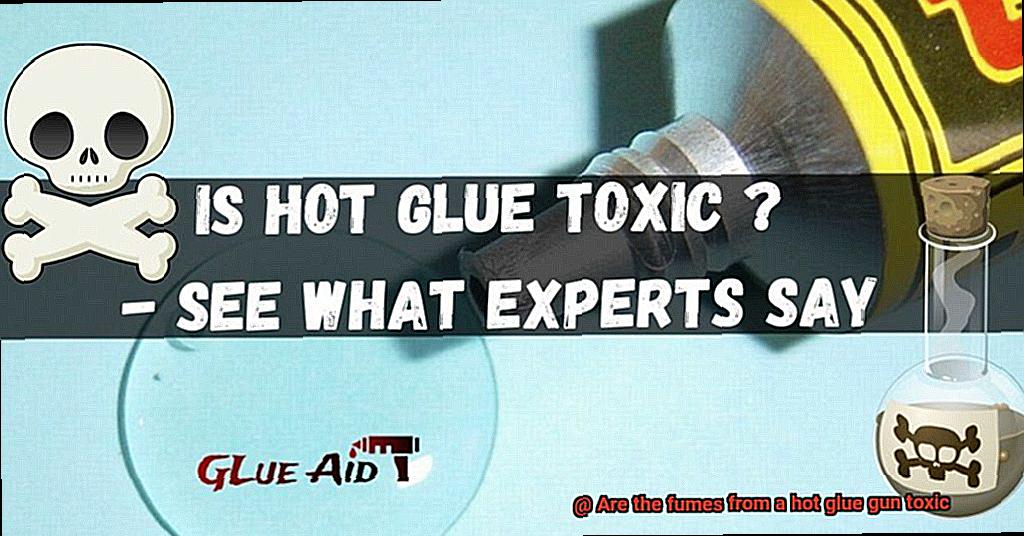
Let’s begin with the star of the show: EVA, the main ingredient in hot glue. When heated, this thermoplastic adhesive emits volatile organic compounds (VOCs), including acetic acid and formaldehyde. Acetic acid gives off that familiar vinegar-like aroma associated with hot glue guns. Though not highly toxic, prolonged exposure to high concentrations can irritate the respiratory system and eyes.
Formaldehyde:
Ah, formaldehyde, the notorious villain of the chemical realm. It is a known carcinogen that can cause respiratory irritation and allergic reactions. However, fret not. The amount of formaldehyde released by hot glue guns is typically low and may pose minimal risk unless used in poorly ventilated areas or for prolonged periods.
Other Potential Chemicals:
Butylated Hydroxytoluene (BHT) and various plasticizers may also be present in certain adhesive formulations. BHT acts as a stabilizer, while plasticizers enhance flexibility and adhesive properties. These chemicals are generally safe when used as intended, but it’s crucial to be aware of their presence.
Variations and Precautions:
Remember that different brands and types of hot glue may have distinct formulations. Always consult the manufacturer’s instructions to understand what you’re working with. Factors like temperature, ventilation, and duration of use can influence the release and concentration of chemicals in the fumes. To minimize potential exposure, work in well-ventilated areas and adhere to safety guidelines.
Potential Health Risks from Fumes
Crafters and DIY enthusiasts alike often turn to hot glue guns for their adhesive needs. However, beneath the convenience and versatility of these tools lie potential health risks associated with the fumes they emit. In this article, we will delve into the hidden dangers of hot glue fumes and provide valuable tips on how to protect yourself from their harmful effects.
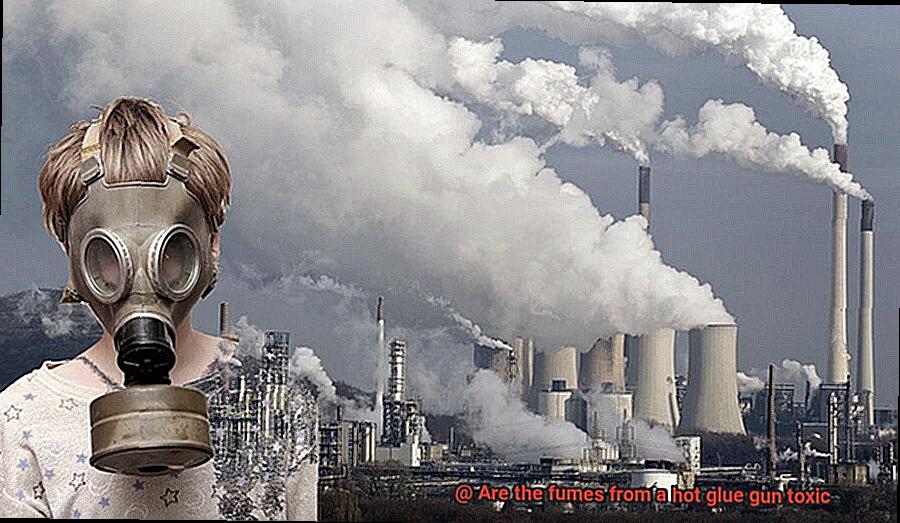
Hot glue is primarily composed of thermoplastic adhesive, which typically consists of synthetic polymers such as ethylene-vinyl acetate (EVA) or polyurethane. When these materials are heated, they release fumes that contain volatile organic compounds (VOCs). VOCs are chemicals that can vaporize at room temperature and be inhaled into the lungs, posing serious health risks.
Among the common VOCs found in hot glue fumes are formaldehyde, toluene, and acetone. Prolonged exposure to these chemicals can have severe consequences. Formaldehyde, for instance, is a known carcinogen that can cause respiratory and eye irritation, as well as allergic reactions. Toluene exposure can result in neurological effects like headaches, dizziness, and confusion. Acetone, on the other hand, can irritate the eyes, nose, and throat and may induce drowsiness or dizziness.
The concentration of fumes emitted by a hot glue gun depends on various factors, including the temperature at which the glue is melted and the level of ventilation in the area where it is being used. Insufficient ventilation can lead to higher concentrations of fumes in the air, thereby increasing the potential health risks.
Individuals with pre-existing respiratory conditions like asthma or allergies are particularly vulnerable to the effects of hot glue fumes. Therefore, it is crucial for such individuals to take necessary precautions or avoid prolonged exposure altogether.
To minimize potential health risks, it is recommended to use hot glue guns in well-ventilated areas. Employing local exhaust ventilation systems, such as fans or open windows, can effectively remove fumes from the work area. Additionally, wearing personal protective equipment like gloves and goggles can prevent direct contact with the adhesive or accidental splashes.
Following the manufacturer’s instructions and safety guidelines when using a hot glue gun is of utmost importance. Proper handling and adequate ventilation are key to minimizing the risk of exposure to harmful fumes.
Proper Ventilation and Protective Equipment
Ventilation is key when working with a hot glue gun. Those innocent-looking fumes that waft from your glue gun actually contain volatile organic compounds (VOCs) and other toxic chemicals. Breathing in these fumes can lead to respiratory and eye irritation, dizziness, headaches, and even more serious health issues if you’re exposed for too long. Not exactly the kind of crafting experience you signed up for, right? That’s why proper ventilation is so important.
Imagine yourself in a well-ventilated craft room, with fresh air flowing freely. Open those windows and doors to let the toxic fumes escape and be replaced by clean air. If opening windows isn’t an option, consider using exhaust fans or air purifiers to remove the fumes from the room. The goal is to avoid working in a confined space without proper ventilation – that’s a recipe for disaster.
Now, let’s talk protective equipment. Hot glue is aptly named; it’s HOT. No one wants a glue gun mishap resulting in burns or irritation. That’s where safety goggles or glasses come in handy. Protect your precious peepers from any potential splatters or drips of hot glue. And while you’re at it, why not throw on some gloves too? They’ll shield your skin from direct contact with the hot glue and save you from any unwanted burns or irritation.
It’s important to note that not all glues are created equal. Even if a glue is labeled as “low-odor” or “non-toxic,” it doesn’t mean it’s completely harmless. Always read and follow the manufacturer’s instructions for proper ventilation and safety precautions. Don’t assume anything – better safe than sorry, right?
Long-Term Exposure to Fumes
Long-term exposure to fumes can have detrimental effects on our health, particularly when it comes to hot glue guns. When we delve into the chemicals found in these fumes, we encounter volatile organic compounds (VOCs) like formaldehyde, acetaldehyde, and benzene. These names may sound intimidating, but understanding their impact is crucial.
Formaldehyde, a known carcinogen, has been linked to respiratory issues such as asthma and bronchitis. The risks escalate with prolonged exposure, as it may increase the likelihood of developing nasal and lung cancer. Talk about a chilling reality.
Acetaldehyde, another chemical present in hot glue fumes, is classified as a possible human carcinogen. Inhaling its fumes can irritate our eyes, nose, throat, and respiratory system. Chronic exposure might result in long-term respiratory conditions and even harm our liver. Let’s protect those vital organs.
Lastly, we encounter benzene – a highly toxic chemical that lurks within hot glue fumes. Regular exposure to benzene increases the risk of leukemia and other blood-related cancers. It also causes dizziness, headaches, and drowsiness. We don’t need a toxic cloud hanging over our heads.
Now that we grasp the potential risks, let’s discuss protective measures. Ventilation is key. Ensure you’re in a well-ventilated area when using a hot glue gun for an extended period. Open those windows wide or invest in an air purifier to prevent fume build-up.
Donning protective gear is another smart move. Safety goggles or glasses shield your eyes from irritation, while gloves protect your skin. And don’t forget your respiratory system. Consider wearing a respiratory mask or investing in a fume extractor to minimize inhalation of those harmful chemicals.
Remember, crafting should be a joyous experience, but not at the expense of our health. Occasional use of a hot glue gun is generally safe, but prolonged or repeated exposure over months or years can increase the risks. So be vigilant, let the fresh air flow through your workspace, and arm yourself with protective equipment to ensure a safe and healthy crafting journey.
Health Problems for Individuals with Respiratory Conditions or Sensitivities
Individuals with respiratory conditions or sensitivities face a range of health problems when exposed to certain substances or environments. One common issue is the inhalation of fumes from hot glue guns, which can pose serious risks.
These fumes contain volatile organic compounds (VOCs), which have the potential to irritate and inflame the respiratory system. For those who already have asthma or allergies, this exposure can trigger symptoms such as coughing, wheezing, and shortness of breath. Imagine being in the middle of a crafting project, only to find yourself struggling to breathe – not exactly the desired outcome.
But it doesn’t stop there. Prolonged exposure to hot glue gun fumes can lead to even more severe respiratory problems like bronchitis or chronic obstructive pulmonary disease (COPD). These conditions can significantly impact an individual’s quality of life and require long-term management.
To protect themselves, individuals with respiratory conditions or sensitivities should take precautionary measures. Firstly, working in a well-ventilated area is crucial. Opening windows or using fans can help disperse the fumes and bring in fresh air. If ventilation is limited, investing in an air purifier specifically designed for filtering out VOCs is highly recommended.
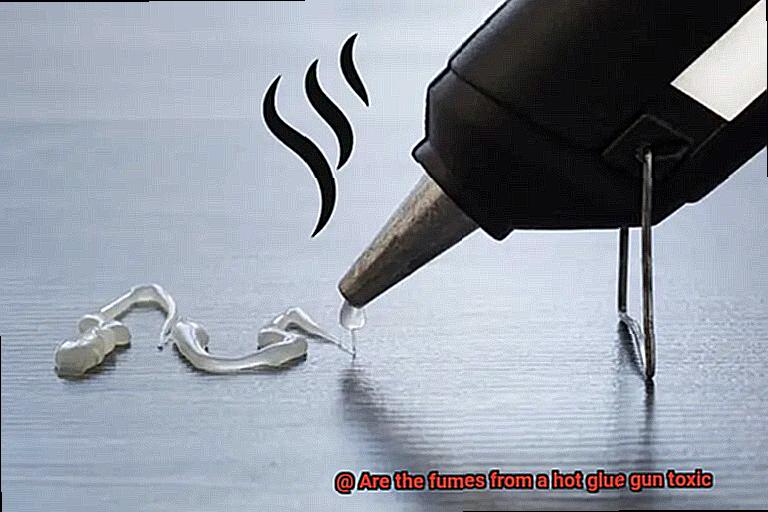
Secondly, wearing protective gear is essential. Safety goggles or glasses can shield the eyes from irritation caused by fumes, while gloves protect the skin. Equally important is protecting the respiratory system by wearing a proper respiratory mask or using a fume extractor to minimize inhalation of harmful substances.
Lastly, if any adverse health effects are experienced after using a hot glue gun, seeking medical attention is vital. Ignoring symptoms or dismissing them as temporary discomfort could lead to further complications.
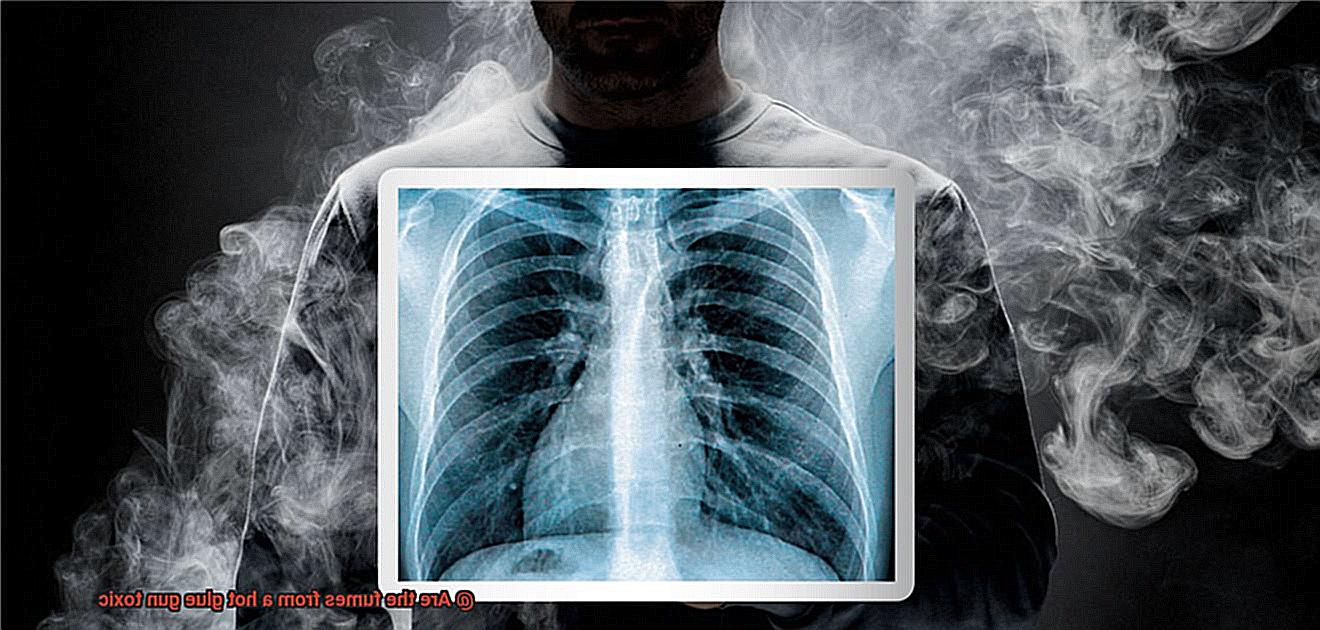
Safety Guidelines from Manufacturer
Crafting with hot glue guns can be an exciting and fulfilling experience. Whether you’re working on a DIY project or creating beautiful crafts, it’s important to prioritize safety. Manufacturers of hot glue guns provide safety guidelines to ensure that your crafting adventures are both safe and fun. Let’s take a closer look at these safety guidelines and how they can help keep you protected.
First and foremost, ventilation is key when using a hot glue gun. The fumes emitted by the glue can be quite potent, so it’s essential to work in a well-ventilated area. Just like opening a window to let in some fresh air, proper ventilation helps to dissipate those sneaky little troublemakers. If your workspace has limited airflow, don’t worry. You can always rely on a trusty air purifier to filter out those pesky fumes and keep your lungs happy.
Next, let’s gear up like the crafting superheroes we are. Remember those safety goggles from your high school chemistry class? Dust them off and put them on because they’ll be your best friend during crafting sessions. Protecting your eyes from potential splashes or drips of hot glue is crucial. Plus, don’t forget to suit up your hands with some gloves to shield them from burns. Safety first, my fellow crafters.
Now let’s talk about handling that hot stuff – literally. The heated nozzle or tip of your hot glue gun is not a friendly handshake waiting to happen. It can cause serious burns if not handled properly. So, keep your distance. Wait for the glue gun to cool down before handling it. If you absolutely must touch the nozzle, use a heat-resistant glove or tool to do so safely. Let’s keep those fingers intact and ready for more crafting adventures.
Safety isn’t just about protecting yourself; it’s also about keeping others out of harm’s way. Hot glue guns are not suitable for unsupervised use by children. The high temperatures and the risk of burns make it important to keep them at a safe distance. Additionally, pets can accidentally stumble upon that hot nozzle, causing injury. So, let’s make sure our furry friends and little ones are kept away from the crafting area.
Storing and handling your hot glue gun properly is equally important. It’s essential to keep it away from flammable materials when not in use. Be sure to unplug it after each use and never leave it unattended while it’s plugged in. Accidental fires and damage to your crafting space are unwanted surprises we want to avoid.
While these are general safety guidelines, it’s crucial to familiarize yourself with the specific instructions provided by the manufacturer of your hot glue gun model. Different models may have slight variations in their guidelines, so reading the manual and following the instructions specific to your glue gun is essential.
Symptoms of Fume Inhalation
If you’re a fan of hot glue guns, then you know just how handy they can be for all your crafting needs. However, it’s crucial to be aware of the potential symptoms that may arise from fume inhalation when using these nifty devices. But fear not, my crafty friends, because I’ve got all the need-to-know info right here.
Let’s start with respiratory irritation. Inhaling those hot glue gun fumes can sometimes lead to coughing, wheezing, or shortness of breath. Now, don’t panic just yet. These symptoms are more likely to occur if you have pre-existing respiratory conditions like asthma or allergies. So, if you fall into that category, take extra care and maybe even consider wearing a mask or respirator for added protection.
Now, let’s talk about headaches and dizziness. These sneaky symptoms can pop up due to the chemical compounds present in the glue and their potential effects on our central nervous system. But here’s the good news – they’re usually temporary and disappear once you step away from the fumes. So, if you start feeling a bit woozy while crafting, take a breather (literally.) and step outside for some fresh air.
Oh, and let’s not forget about skin irritation. Accidentally coming into direct contact with hot glue or its fumes can leave you with some redness, itching, or even a little rash. Ouch. To avoid this unpleasantness, be sure to handle your glue gun with care and keep those precious fingers away from the hot stuff.
Now that we’ve covered the symptoms, let’s dive into prevention. Working in a well-ventilated area is key. Crack open a window or use fans to keep that air flowing and prevent those fumes from building up. And hey, why not rock a stylish mask or respirator while you’re at it? It’ll provide an extra layer of protection, especially if you’re particularly sensitive to fumes.
So, my crafty comrades, while the symptoms of fume inhalation from a hot glue gun are possible, they’re relatively rare and usually only occur with prolonged exposure or in high concentrations. As long as you take the necessary precautions and work in a well-ventilated space, your crafting adventures should be smooth sailing.
UBIHBYJI6Wc” >
Also Read: Is Hot Glue Toxic? – Glue Things
Conclusion
In conclusion, it is important to be cautious when using a hot glue gun due to the potential toxicity of its fumes.
While the fumes may not be immediately harmful in small doses, prolonged exposure or inhaling large amounts can have adverse effects on your health. These toxic fumes can irritate your respiratory system, causing coughing, wheezing, and difficulty breathing.
To protect yourself from these potential dangers, it is recommended to use a hot glue gun in a well-ventilated area or wear a mask to filter out the fumes.

